Art History
A look to the past guides in the future.
Seventeenth Century
By the beginning of the seventeenth century, the church had regained much of its influence in Italy and was involved in a large- scale program of building and decoration. A new style of church construction known as Baroque featured a sculptured, dynamic look. The unique character of the Italian Baroque painting style was due largely to the efforts of one man, Caravaggio. Caravaggio was curious about how things actually looked and drew his inspiration from carefully observing things around him. Later, his style changed to include a greater use of a bold, strong light. His figures looked human, not spiritual or supernatural as they did in Mannerist paintings. Caravaggio's style of combining light and realism had an impact on the entire European art world.
Perhaps the only Italian artist of this period worthy of being ranked alongside Caravaggio is the Bolognese painter Annibale Carracci. He shared Michelangelo's belief that artistic perfection could only be achieved through drawing. His later works used a line quality powerful enough to be compared with Michelangelo's. But Carracci could also use a firm, clear, sensitive line to create a scene of great warmth and charm
Perhaps the only Italian artist of this period worthy of being ranked alongside Caravaggio is the Bolognese painter Annibale Carracci. He shared Michelangelo's belief that artistic perfection could only be achieved through drawing. His later works used a line quality powerful enough to be compared with Michelangelo's. But Carracci could also use a firm, clear, sensitive line to create a scene of great warmth and charm
Art Works
Peter Paul Rubens was the greatest Flemish painter of the seventeenth century. While still a young man, Rubens spent eight years in Rome. The drawings he created at that time show that he studied classical ruins, the works of Renaissance masters, and the works of leading contemporary artists, including Caravaggio. Rubens's later drawings and paintings were noted for their grandeur and flowing rhythm
Anthony van Dyck, Rubens's greatest follower, gained fame as a portrait painter. His fashionable portraits were noted for their elegance, dignity, and skillful portrayal of rich materials. Besides his famous portraits, van Dyck also made some remarkably fresh landscape studies in watercolor and in inkramatic, emotional works of art are made during the Baroque era. Curvy figures, bold self-portraits and genre (images of everyday people) are popular.
Art works
The first great Dutch seventeenth -century artist was Rembrandt. He painted portraits with such dazzling brushwork that he is regarded as one of the most skilled technicians in the history of art. While other Dutch artists specialized in painting portraits, landscapes, or scenes from everyday life, Rembrandt used every subject. He also painted these subjects with such brilliance that he is recognized as one of the supreme artistic geniuses of all time. Although he didn't follow the lead of many other Dutch artists who visited Italy, Rembrandt went to art auctions and collected engravings that were modeled on the works of earlier masters. His drawing based on Leonardo's Last Supper is one of three he did that were inspired by, an engraving.
Rembrant's Works
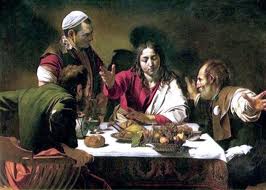 |
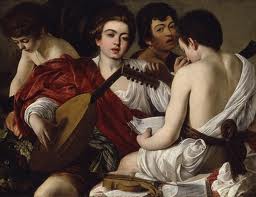 |
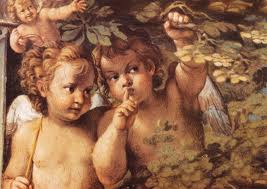 |
| Supper at Emmaus Caravaggio |
Musicians Caravaggio |
Whispering Angels Carracci |
Peter Paul Rubens was the greatest Flemish painter of the seventeenth century. While still a young man, Rubens spent eight years in Rome. The drawings he created at that time show that he studied classical ruins, the works of Renaissance masters, and the works of leading contemporary artists, including Caravaggio. Rubens's later drawings and paintings were noted for their grandeur and flowing rhythm
Anthony van Dyck, Rubens's greatest follower, gained fame as a portrait painter. His fashionable portraits were noted for their elegance, dignity, and skillful portrayal of rich materials. Besides his famous portraits, van Dyck also made some remarkably fresh landscape studies in watercolor and in inkramatic, emotional works of art are made during the Baroque era. Curvy figures, bold self-portraits and genre (images of everyday people) are popular.
Art works
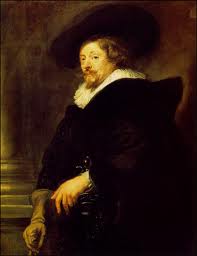 |
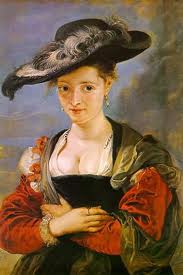 |
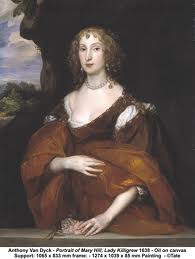 |
| Self Portrait Peter Paul Rubens |
The Straw Hat Peter Paul Rubens |
Portrait of Mary Hill Anthony van Dyck |
Rembrant's Works
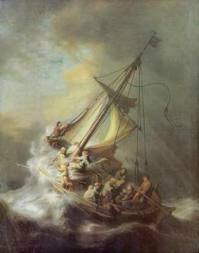 |
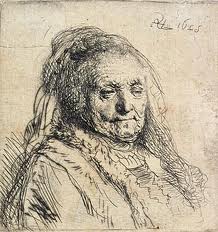 |
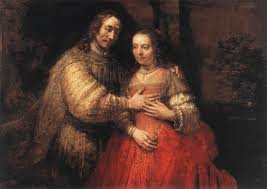 |
| Storm on the Sea of Galilee |
Rembrant's Mother |
The Jewish bride |